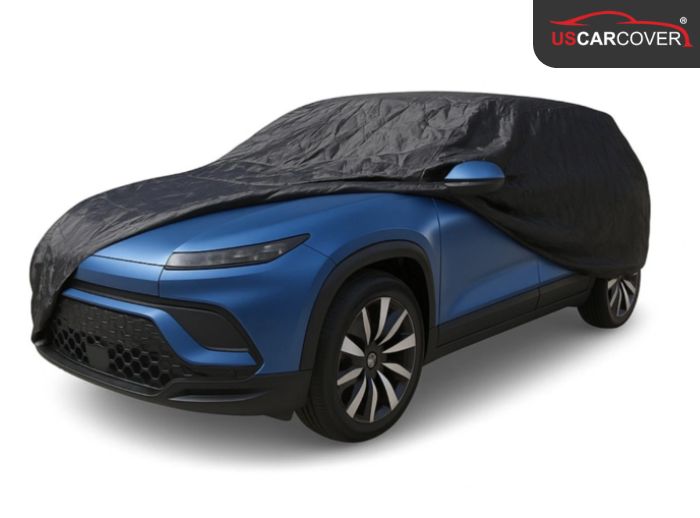
Fisker car cover is not just a “throw-on layer” to keep off sun and rain. With Fisker EVs, where expansive glass surfaces, deep-gloss paint, and a roof panel that can integrate solar cells all come together, a proper cover is the first immune system between your car and a harsh environment. From blazing Sun Belt heat to California and Florida sea mist, from East Coast spring pollen to winter snow and road salt in the Snow Belt, each condition quietly leaves marks if you do not take the initiative to protect the car. What worries many owners most is this: lots of glass looks stunning but is also easier to micro-mar, and a solar-integrated glass roof is “high tech” yet sensitive to trapped moisture, mineral spotting, and localized heat. The right starting point is a cover with an ultra soft liner, breathable construction, a custom-fit pattern, and paint and glass safe details for seals and trim. This article unlocks that pain point with a clear progression. First, a snapshot of Fisker EVs and the zones that demand priority protection. Next, why a soft liner is the prerequisite on a glass-rich vehicle. Finally, how to protect the solar-integrated glass roof so you can relax whether you park briefly at noon or leave the car outside overnight.
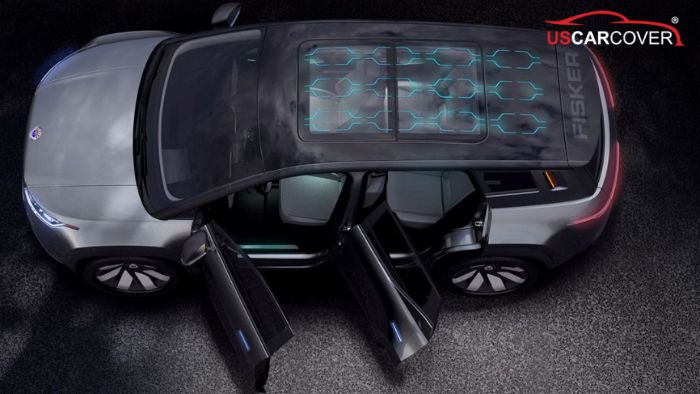
Related Articles: Fiat car cover: Should you choose Full cover or half cover for Fiat
Quick overview of Fisker EVs and the areas that need priority protection

One reason Fisker EVs are loved is the airy feel created by their glass. Large panes open up the view, let natural light flood the cabin, and showcase a minimalist interior. On some configurations, the glass roof integrates solar cells, capturing solar energy under suitable conditions. Outside, the design language emphasizes continuous curves and few hard breaks, which makes the paint look deep and liquid under sunlight. Driver-assist hardware such as cameras, radar, and sensors typically sit around the windshield, faux grille, mirrors, and rear, reinforcing a modern and refined presence that aligns with the EV ethos.
That same architecture also makes the vehicle more sensitive to two very common issues: micro friction and trapped moisture. Micro friction appears whenever there is relative movement between a cover and glass or paint. A thin film of pollen, fine sand, or microscopic salt crystals caught between liner and glass can be enough to produce swirl marks after a few weeks of incorrect use. Trapped moisture is a consequence of day to night temperature swings, brief rain, morning dew, or sea mist. If the cover material is too sealed, vapor cannot escape and remains between liner and surface, leaving mineral rings, musty odor, and even light corrosion along tiny metal edges at the glass surround.
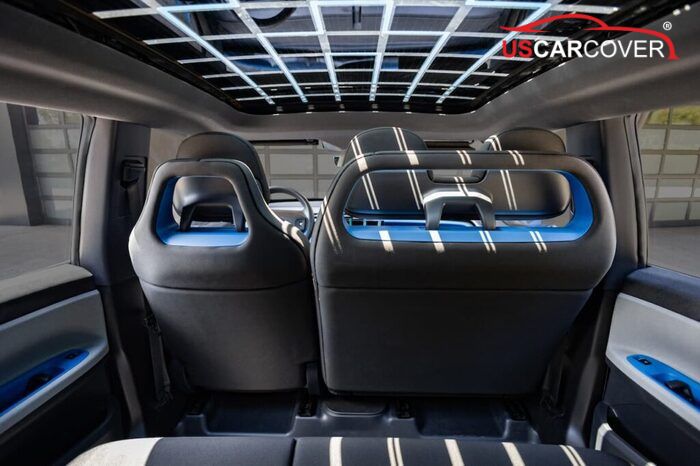
Owner pain often comes from ordinary moments. Park outdoors for a few hours at noon and return to a heat-soaked windshield. Stop under trees for just thirty minutes and pick up sap and droppings. Spend a night near the coast and wake to a veil of salt mist. Drive in wet winter, collect road salt around the arches, then throw on an airtight cover and lock in moisture. The results are predictable. Glass and paint gradually lose clarity, halos appear under the sun, PPF edges can ripple over time, and a sour damp smell greets you when you open the door. The fix is not “cover as tightly as possible” or “thicker fabric is always safer.” You need a balanced system: an ultra soft liner to negate coarse friction, a custom-fit pattern to eliminate excess movement, a breathable fabric so vapor leaves rather than lingers, and a cover routine that is clean, dry, gentle, and stable.
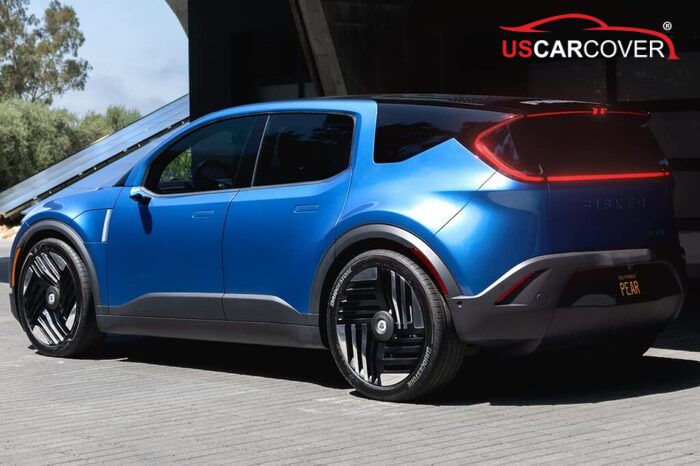
Related Articles: Ferrari Car Cover: Custom-fit, scratch-resistant, breathable, safe for paint
Within that picture, three areas deserve top priority:
- All glass surfaces, including windshield, roof glass, side glass, and rear glass, because they are sensitive to abrasion and mineral spotting.
- The solar-integrated glass roof, because it endures strong heating during the day and is prone to condensation at night.
- Panel edges, seals, and plastic or rubber trims, because they trap moisture and minerals and are harder to restore if neglected.
Soft liner: the prerequisite when a car has many glass surfaces

A good cover always begins with the liner. If glass and paint are the skin, then the liner is the cloth that touches the skin directly. On a glass-rich Fisker, that cloth must be soft enough that contact does not become harmful friction. Why is this the prerequisite?
First, the glass and deep-gloss paint on Fisker reveal flaws with painful honesty under the sun. Just a few micro scratches can show up as light swirls the moment you shift angles. The culprit is not always a “bad fabric.” Often it is hard particles trapped between the fabric and the surface. If the liner is coarse, stiffens with age, or bleeds dye when damp, these factors turn even light contact into repetitive friction. By contrast, an ultra soft liner, such as premium, smooth microfiber or high-grade fine fleece that does not bleed and does not fuzz, lowers the coefficient of friction from the start.
Second, “soft” alone is not enough if sewing turns edges into ridges. Recessed stitching, appropriate stitch density, and soft hems are three often overlooked elements. A proud seam or hard hem pressing at glass edges, paint edges, or wheel-arch crowns can become a tiny “roller” if the cover flutters in wind. Recessed stitching removes that ridge at the contact line, while a soft hem prevents the cover’s edge from becoming a sharp boundary.

Third, a soft liner only truly works when the cover fits the body. Imagine wearing silk gloves but tossing on an oversized jacket that billows in the wind. The gloves will still be dragged along. On a glass-dominant body with high points like roof-to-windshield transitions, A pillars, mirrors, and tail contours, any repetitive movement is enough to etch fine swirls over time. Custom-fit is the skeleton that holds the soft glove in place.
If you choose the wrong liner, the pain shows up quickly. Thin halos around curved glass, faint “frost-like” scuffs at glass edges, or slight stains where dyed liners bled under humidity are all familiar outcomes. The fix is to make four words nonnegotiable: soft, clean, fitted, breathable. Soft makes contact gentle. Clean avoids trapping grit between two surfaces. Fitted keeps the cover from pumping in the wind. Breathable prevents moisture from being held against the surface. When these four work together, the glass and paint on Fisker keep their out-of-the-box clarity for a long time.

Related Articles: Bentley car cover: luxury, quality, finesse even while the car is covered
Protecting the solar-integrated glass roof: specific risks and the right handling

The solar-integrated glass roof is the signature technology that makes Fisker stand out at first glance. That same uniqueness brings a set of demands your cover must meet.
The real-world scenario is clear. By day, the roof panel is blasted with sun and heats up quickly. By night, temperatures drop, airborne moisture reaches the dew point, and condensation forms on the glass. If you use a sealed, nonbreathing cover, vapor gets stuck between liner and glass and creates a damp micro greenhouse. After a few cycles, you begin to see mineral trails where water ran, sometimes right along tiny drain paths. Persistent dampness invites odor and can encourage micro growth along seals. Near the coast, salt mist compounds the problem because salt is hygroscopic and clings stubbornly.
Another worry is localized heat. When glass is already hot and you close it in for a long stretch, heat can linger at the glass–liner interface. In principle, the solar roof is designed for environmental heat loads, but adding an insulating layer is not ideal for long-term health of seals, soft plastics, and adjacent trim. So how do you block direct fallout onto the roof without trapping moisture or heat?
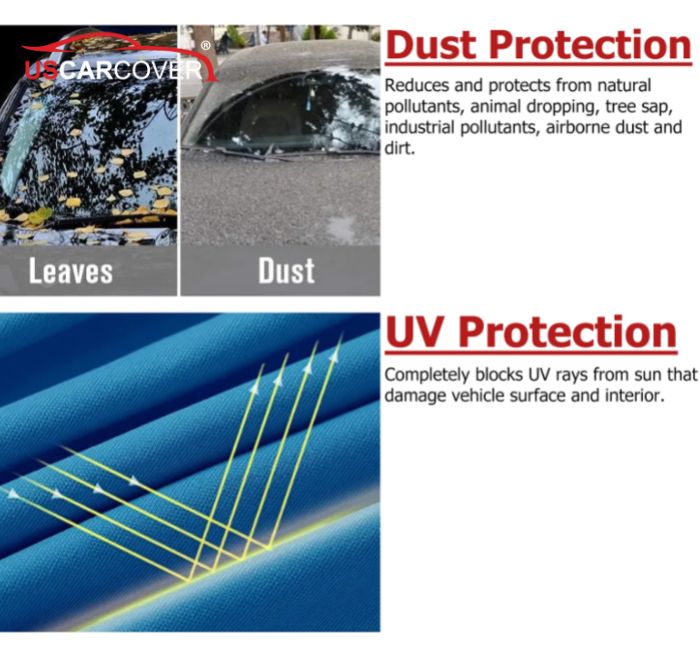
It comes down to two words: context and handling.
- Short midday stops, lower cabin heat, block vertical fallout: This is where a half cover shines. A half cover that is breathable, soft-lined, and equipped with mirror pockets can be deployed in seconds. It shades glass and roof, noticeably cools the cabin, and blocks pollen, sap, and droppings that fall straight down. Because you do not drag fabric along the sides, you also reduce user-induced abrasion.
- Overnight, multi-day, or coastal parking: Choose a full cover. But it must be breathable so vapor can escape, custom-fit so it does not flutter, soft-lined so it touches glass and paint gently, and anchored with underbody straps for windy conditions. Covering the whole body keeps sea mist off the sides as well as the roof. In the morning you lift a dry cover and avoid wiping long mineral trails off the flanks.
- Right after rain, when glass and roof are still wet: Do not cover immediately. Wipe clean and let everything dry, then cover. If you rush, you lock water and minerals against the glass and almost guarantee stains.
- Charging outdoors: Do not seal the charge port under a cover or let the fabric press on the cable. Leave the recommended clearance for safety, avoid pulling forces on the connector, and keep unnecessary heat away from the charge area.
When context and handling align with a Fisker car cover built correctly, meaning soft liner, recessed seams, soft hems, breathable fabric, and a precise pattern, the solar-integrated glass roof is protected in the truest sense: clean, dry, cool, and stable.
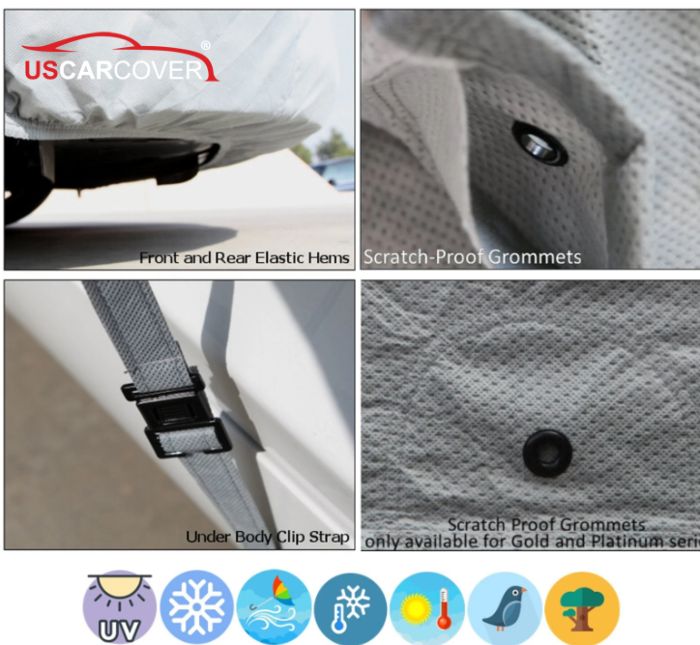
Related Articles: Dual-Ghia car cover for long-term storage: quick-dry, no musty odor, no soft-top mildew
Custom-fit and aerodynamic stability: reducing excess movement and stopping repetitive friction
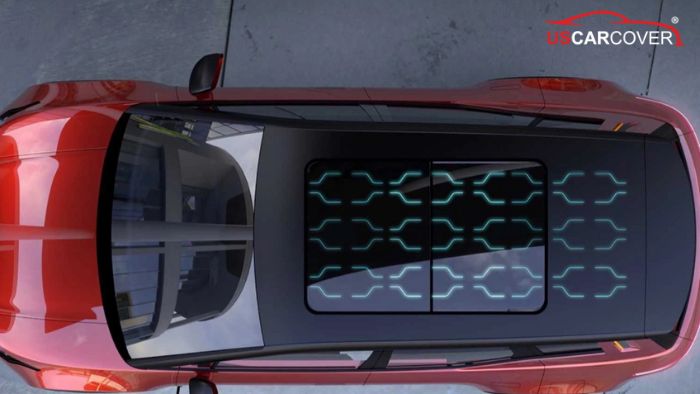
Once you understand “soft” and “breathable,” the next piece is “fitted.” Any lateral motion between cover and surface is a source of repetitive friction. On Fisker, high points such as glass edges, wheel-arch crowns, mirrors, A pillars, and tail transitions are the places that print movement most readily. Custom-fit eliminates the hollow pockets that wind exploits, spreads load evenly, and persuades the cover to stay put instead of “dancing".
A trustworthy cover therefore needs mirror pockets placed correctly, proper drop at the tail, elastic hems that hug the edges, underbody straps for windy areas, recessed seams that minimize ridges, and few panel joins at sensitive zones. Once the cover is stable, the soft liner can actually do its job. When there is no flutter, any remaining dust has far fewer chances to be dragged into a swirl.
Breathability and moisture management
A plastic-bag seal is not “great water resistance.” It is “great at keeping moisture in.” Your goal is not to be bone dry the instant rain stops. Your goal is long-term dryness over days and weeks. A micro-porous, breathable fabric allows vapor to diffuse outward while the outer face is treated so rain beads and rolls away. That balance prevents damp greenhouse conditions between liner and glass and shortens drying time after showers.
The companion routine is simple. If the cover is wet, air dry it before storing. If the vehicle surface is damp, wipe it dry before covering. In coastal environments, shake fine salt off the outer face before folding so you are not packing hygroscopic salt for the next use.

Related Articles: How To Protect Your Eagle: Compact tools that matter in your car
Where to Buy a Quality Fisker Car Cover

When you own a Fisker, you naturally want to protect it with a Fisker car cover worthy of its design and value. At uscarcover.com, you can easily find Fisker car covers that are custom-fit for each specific model such as the Fisker Ocean, Fisker Karma, or Fisker Ronin. Every Fisker car cover is made from premium materials that provide UV protection, water resistance, and scratch prevention, while still maintaining breathability to keep your car dry and spotless. Inside, a soft lining protects the paint from friction and dust during use.
In addition, uscarcover.com offers a professional shopping experience, fast nationwide delivery, and flexible return policies. Whether your car is parked outdoors or in a garage, a high-quality Fisker car cover will help extend your vehicle’s lifespan and preserve its elegant, like-new appearance every day. Visit uscarcover.com today to choose the best Fisker car cover - a perfect match for the Fisker you love.
Related Articles: How to Protect Datsun from Harsh Sun and UV: keep paint and interior looking new
FAQ

Does covering reduce energy from the solar roof panel?
- Yes. When covered, the roof does not receive direct sun. Be flexible. Use a half cover for short stops when you need cooling and cleanliness. Use a full cover for overnight or harsh conditions when comprehensive protection matters more
Does a breathable cover “let water in”?
- Micro-porous fabric lets vapor escape while the outer face is finished so rain beads and rolls off. The target is long-term dryness without moisture trapping.
Can I charge while the car is covered?
- Yes, but do not seal the charge port or let the cover press on the cable. Leave safety clearance and avoid pulling forces on the connector.

When you talk about a Fisker car cover for a glass-rich EV with a solar-integrated roof, do not chase a single spec. Real value comes from a balanced “core four.” An ultra soft liner to control micro friction. A custom-fit pattern to kill wind-driven flutter. A breathable fabric to manage moisture correctly. And thoughtful build details, such as recessed seams and soft hems, so no hard ridge ever rubs on an edge. When that “core four” runs with clean, dry, gentle, stable habits, your glass, solar-integrated roof, paint, and seals are protected in the right way. In a variable U.S. climate, this is the simple but effective path to preserving glass clarity, paint depth, and the pleasant feel every time you open the door. Instead of worrying that “lots of glass scratches easily and the solar roof traps moisture,” you shift to confidence. Pull the cover off and your Fisker still looks as vibrant as day one.
